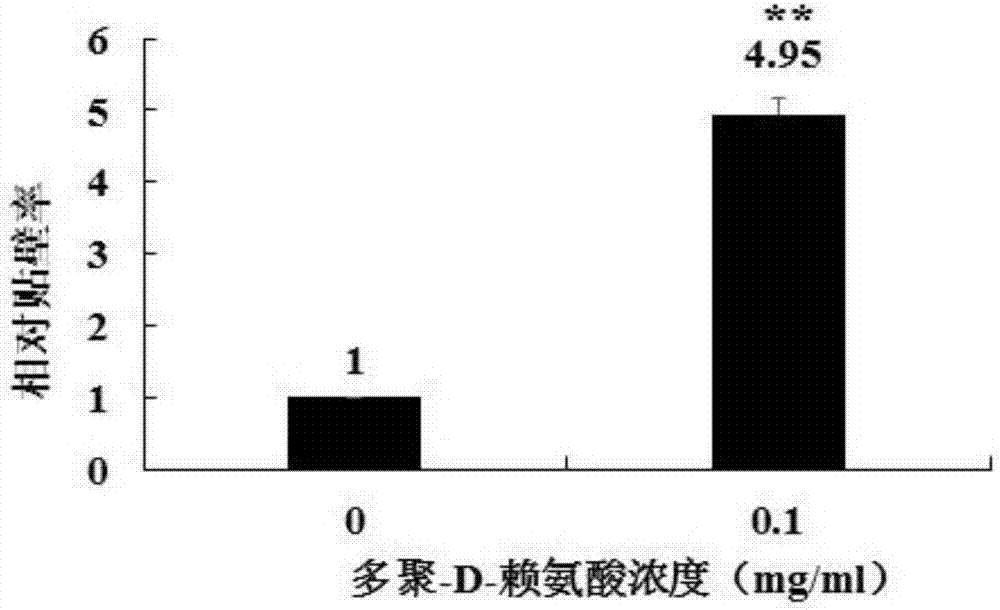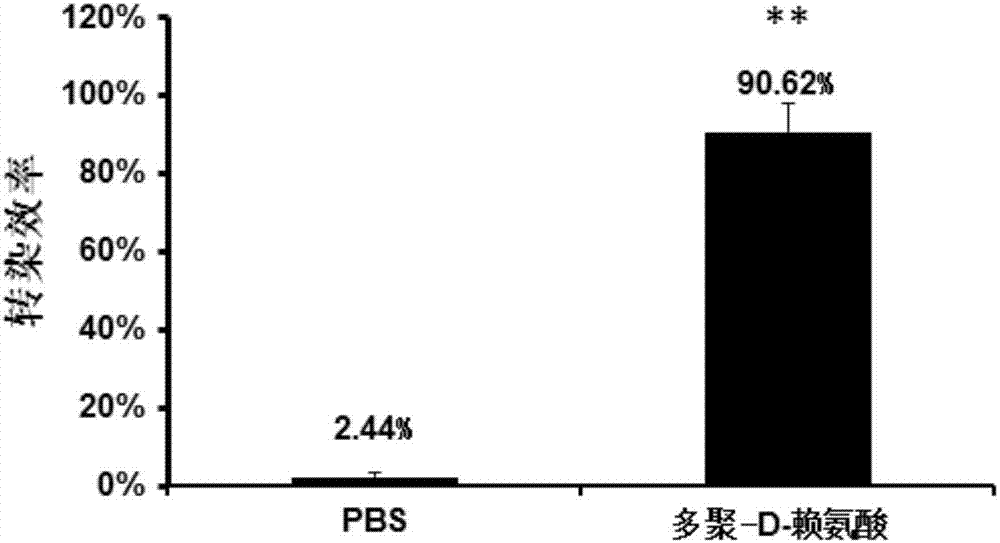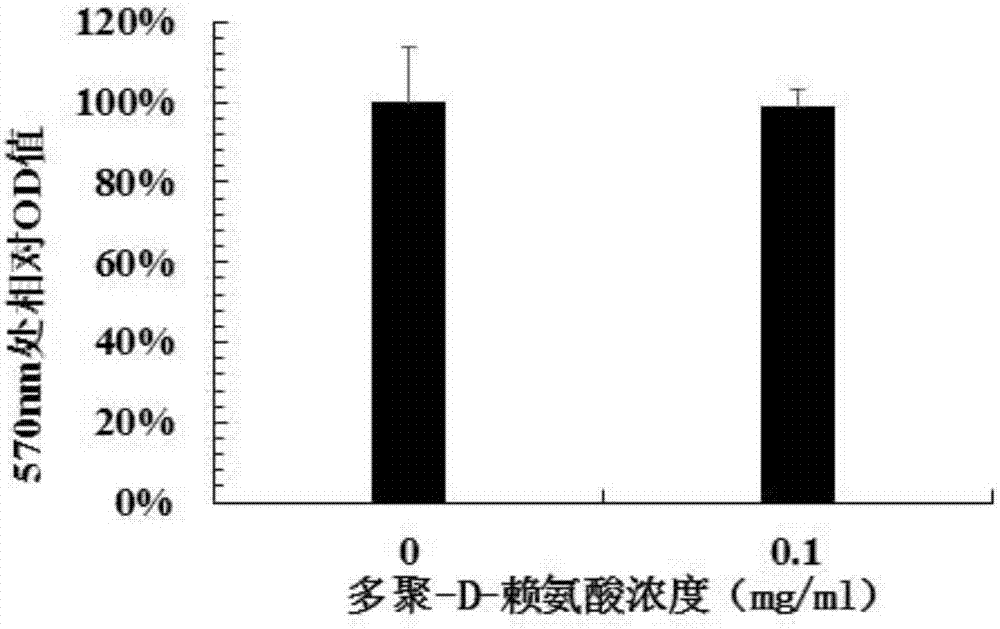Method for transfecting Jurkat cells
A cell and well plate technology, applied in the biological field, can solve the problems of inapplicable Jurkat cells, waste of reagents, high concentration, etc.
- Summary
- Abstract
- Description
- Claims
- Application Information
AI Technical Summary
Problems solved by technology
Method used
Image
Examples
Embodiment 1
[0017] Embodiment 1 A method of transfecting Jurkat cells, comprising the following steps:
[0018] a. Add 150 μL of PBS containing 0.1 mg / mL poly-D-lysine to the 24-well plate, add 150 μL of PBS to the other well of the 24-well plate as a control group, and let stand overnight in a 4-degree refrigerator.
[0019] b. Suck off the supernatant, wash 3 times with PBS, mix 1.5×10 6 Jurkat cells were resuspended in 500 μL of RPMI1640 medium containing 10% newborn bovine serum and antibiotic-free, and cultured in a 37-degree, 5% CO2 incubator for 12 hours. Then the unattached cells were sucked off, washed 3 times with PBS for 5 minutes each time, and 300 μL of PBS was added to observe the adhesion of Jurkat cells under a microscope ( figure 1 ). Randomly select 8 fields of view, record the number of cells in each field of view, divide the number of cells in each group by the number of cells in the control group, and obtain the relative adhesion rate.
[0020] c. When the relative...
PUM
 Login to View More
Login to View More Abstract
Description
Claims
Application Information
 Login to View More
Login to View More - R&D
- Intellectual Property
- Life Sciences
- Materials
- Tech Scout
- Unparalleled Data Quality
- Higher Quality Content
- 60% Fewer Hallucinations
Browse by: Latest US Patents, China's latest patents, Technical Efficacy Thesaurus, Application Domain, Technology Topic, Popular Technical Reports.
© 2025 PatSnap. All rights reserved.Legal|Privacy policy|Modern Slavery Act Transparency Statement|Sitemap|About US| Contact US: help@patsnap.com



